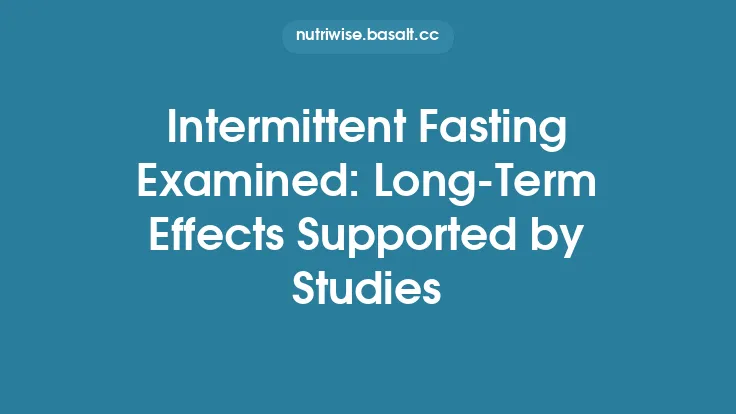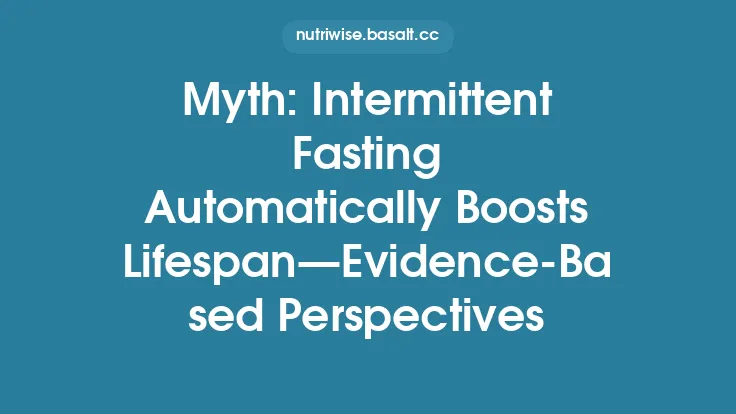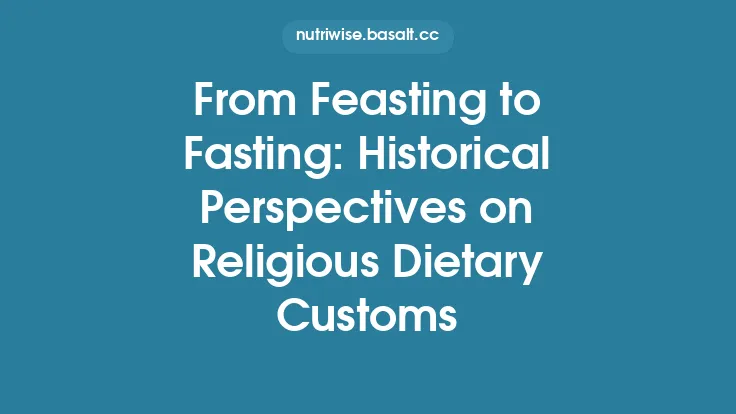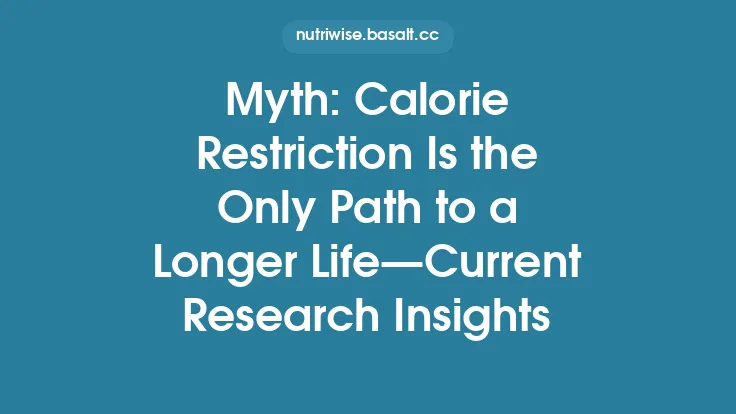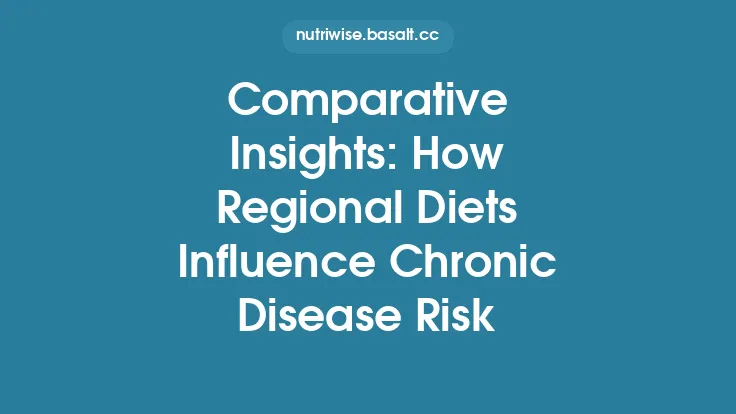Intermittent fasting (IF) has moved from a fringe experiment to a mainstream dietary strategy, largely because it aligns with fundamental human physiology while offering flexibility that many traditional “diet plans” lack. Unlike approaches that prescribe specific macronutrient ratios or food exclusions, IF centers on when you eat rather than what you eat. This temporal focus allows it to be paired with a wide variety of dietary patterns—vegetarian, omnivorous, high‑protein, or balanced—making it a versatile tool for long‑term health optimization.
The Biological Rationale Behind Intermittent Fasting
Evolutionary Perspective
Human ancestors experienced irregular food availability, alternating between periods of scarcity and abundance. Our bodies evolved adaptive mechanisms—such as efficient fat storage, rapid mobilization of energy reserves, and metabolic switching—to survive these cycles. Modern IF protocols, whether they involve a daily 16‑hour fast (16/8) or a weekly 24‑hour fast (Eat‑Stop‑Eat), aim to recapitulate these natural rhythms.
Metabolic Switching: From Glucose to Ketones
During the fed state, glucose derived from dietary carbohydrates is the primary fuel. After roughly 12–14 hours without caloric intake, hepatic glycogen stores become depleted, prompting the liver to produce ketone bodies (β‑hydroxybutyrate, acetoacetate). This shift—often called “metabolic switching”— has several downstream effects:
- Enhanced mitochondrial efficiency – Ketones generate more ATP per unit of oxygen consumed than glucose.
- Reduced oxidative stress – Ketone metabolism produces fewer reactive oxygen species.
- Improved neuronal resilience – β‑hydroxybutyrate serves as a signaling molecule that up‑regulates brain‑derived neurotrophic factor (BDNF) and supports synaptic plasticity.
Hormonal Modulation
Fasting triggers a cascade of hormonal changes that collectively favor fat oxidation and cellular repair:
| Hormone | Direction of Change | Primary Effect |
|---|---|---|
| Insulin | ↓ (decreases) | Low insulin promotes lipolysis and reduces de novo lipogenesis. |
| Glucagon | ↑ (increases) | Stimulates hepatic gluconeogenesis and glycogenolysis. |
| Growth Hormone (GH) | ↑ (increases) | Preserves lean mass and stimulates lipolysis. |
| Norepinephrine | ↑ (increases) | Boosts basal metabolic rate and mobilizes fatty acids. |
| Leptin | ↓ (decreases) | Short‑term reduction may improve appetite regulation; chronic adaptation often normalizes levels. |
| Adiponectin | ↑ (increases) | Enhances insulin sensitivity and fatty‑acid oxidation. |
Cellular Stress Responses
Fasting activates autophagy, a conserved catabolic process where cells degrade and recycle damaged proteins, organelles, and pathogens. Autophagy peaks after 18–24 hours of fasting and is linked to:
- Improved metabolic health – Removal of dysfunctional mitochondria (mitophagy) enhances cellular respiration.
- Neuroprotection – Clearance of protein aggregates may lower risk of neurodegenerative diseases.
- Longevity pathways – Up‑regulation of sirtuins (SIRT1, SIRT3) and AMP‑activated protein kinase (AMPK) mimics caloric restriction, a well‑documented lifespan‑extending intervention in animal models.
Evidence‑Based Health Outcomes
Weight Management
Multiple randomized controlled trials (RCTs) and meta‑analyses have shown that IF can produce modest but clinically meaningful weight loss (average 3–8% of body weight over 12 weeks) when total caloric intake is not compensated during eating windows. The primary driver is increased fat oxidation combined with a natural reduction in overall energy intake due to limited eating opportunities.
Insulin Sensitivity and Glycemic Control
In individuals with prediabetes, IF protocols (especially the 5:2 approach—five days of normal eating, two non‑consecutive days of ~25% caloric intake) have demonstrated:
- ↓ fasting glucose (average reduction 5–10 mg/dL)
- ↓ HbA1c (0.3–0.5% absolute reduction)
- ↑ insulin sensitivity measured by HOMA‑IR
These improvements are comparable to those seen with continuous calorie restriction, but IF may be more sustainable for some patients because it does not require daily counting.
Cardiovascular Markers
Research indicates favorable shifts in lipid profiles:
- ↓ LDL‑C (5–10% reduction)
- ↑ HDL‑C (3–5% increase)
- ↓ triglycerides (10–20% reduction)
- ↓ systolic and diastolic blood pressure (2–4 mmHg)
The mechanisms involve reduced hepatic lipogenesis, enhanced clearance of triglyceride‑rich lipoproteins, and improved endothelial function mediated by nitric oxide pathways.
Inflammation and Oxidative Stress
Biomarkers such as C‑reactive protein (CRP), interleukin‑6 (IL‑6), and tumor necrosis factor‑α (TNF‑α) tend to decline after 8–12 weeks of consistent IF. Simultaneously, antioxidant enzymes (superoxide dismutase, glutathione peroxidase) increase, suggesting a net anti‑inflammatory effect.
Cognitive and Mood Benefits
Short‑term fasting (12–16 hours) has been linked to heightened alertness, improved mood, and better performance on tasks requiring executive function. The underlying neurochemical changes include increased catecholamine release, elevated BDNF, and modulation of the gut‑brain axis via short‑chain fatty acids produced by microbiota during fasting periods.
Popular Intermittent Fasting Protocols and Their Practicalities
| Protocol | Typical Schedule | Key Advantages | Potential Drawbacks |
|---|---|---|---|
| 16/8 (Time‑Restricted Eating) | 16‑hour fast, 8‑hour eating window (e.g., 12 pm–8 pm) | Easy to integrate into daily life; minimal disruption to social meals | May be challenging for early‑morning exercisers who need pre‑workout fuel |
| 5:2 (Modified Fast) | Normal eating 5 days; ~500–600 kcal on 2 non‑consecutive days | Allows flexibility; lower overall fasting burden | Caloric restriction on “fast days” can be difficult for some; risk of overeating on non‑fast days |
| Eat‑Stop‑Eat | 24‑hour fast once or twice weekly (e.g., dinner to dinner) | Strong metabolic switch; simple to remember | Longer fasts may cause fatigue, irritability, or hypoglycemia in susceptible individuals |
| Alternate‑Day Fasting (ADF) | Alternating 24‑hour fast (≈0–25% calories) with 24‑hour ad libitum eating | Robust improvements in insulin sensitivity; high fat loss | Adherence can be low; may trigger binge‑eating on feeding days |
| Warrior Diet | 20‑hour fast, 4‑hour “feast” window (often evening) | Aligns with circadian rhythm of many; supports high‑intensity evening workouts | Very restrictive; may not suit those with early‑day energy needs |
Choosing a protocol should consider lifestyle, work schedule, exercise timing, and personal preference. The most sustainable IF plan is the one that can be consistently maintained without causing chronic stress or nutritional deficiencies.
Integrating Intermittent Fasting with a Balanced Nutrition Plan
- Prioritize Nutrient Density
Even though IF does not dictate food choices, the limited eating window makes each meal’s quality crucial. Aim for a balance of:
- Protein (0.8–1.2 g/kg body weight) to preserve lean mass.
- Complex carbohydrates (whole grains, legumes, fruits) for sustained energy.
- Healthy fats (olive oil, nuts, fatty fish) to support hormone production and satiety.
- Fiber (≥25 g/day) to promote gut health and blunt post‑prandial glucose spikes.
- Mindful Timing of Macronutrients
- Pre‑exercise: If training occurs near the start of the eating window, include a modest carbohydrate‑protein snack (e.g., banana with whey) to fuel performance.
- Post‑exercise: Prioritize protein (20–30 g) and some carbs within the first two hours after training to optimize muscle repair and glycogen replenishment.
- Hydration and Electrolytes
Fasting periods can increase water loss, especially if caffeine is consumed. Include:
- Plain water (≥2 L/day)
- Electrolyte‑rich beverages (e.g., a pinch of sea salt, magnesium supplements) if you experience dizziness or muscle cramps.
- Micronutrient Safeguards
- Vitamin D – especially for those with limited sun exposure; 1000–2000 IU/day is common.
- B‑vitamins – important for energy metabolism; consider a B‑complex if intake of fortified foods is low.
- Omega‑3 fatty acids – 1–2 g EPA/DHA daily supports anti‑inflammatory pathways.
- Meal Composition Strategies
- Plate Method: Half non‑starchy vegetables, one‑quarter lean protein, one‑quarter whole‑grain or starchy vegetable.
- Batch Cooking: Prepare protein sources (e.g., grilled chicken, baked tofu) and roasted vegetables in advance to reduce decision fatigue during the eating window.
Addressing Common Concerns and Misconceptions
“Will fasting make me lose muscle?”
When protein intake is adequate (≥1.0 g/kg) and resistance training is incorporated, studies show no significant loss of lean mass. In fact, the rise in growth hormone during fasting can be protective.
“I feel hungry all the time—does that mean IF isn’t for me?”
Hunger typically diminishes after 2–3 weeks as the body adapts. Strategies to mitigate early‑stage hunger include:
- Drinking water or herbal tea during the fast.
- Consuming high‑fiber, high‑protein meals at the start of the eating window.
- Gradually extending fasting length rather than jumping to a long fast immediately.
“Can I fast if I have diabetes?”
People with type 2 diabetes may benefit from improved insulin sensitivity, but fasting can cause hypoglycemia, especially if on insulin or sulfonylureas. Medical supervision is essential; dose adjustments may be required.
“Does IF affect my hormones negatively?”
Short‑term fasting generally supports hormonal balance (↑ GH, ↑ adiponectin). In women, very prolonged or severe caloric restriction can disrupt menstrual cycles; therefore, a moderate IF approach combined with sufficient calories is recommended.
“Will fasting slow my metabolism?”
Resting metabolic rate (RMR) remains stable or may slightly increase due to elevated norepinephrine and thyroid hormone activity during short‑term fasting. Significant metabolic slowdown is more associated with chronic under‑eating, not with time‑restricted eating.
Sustainability: Making Intermittent Fasting a Long‑Term Lifestyle
- Start Small
Begin with a 12‑hour fast (e.g., 7 am–7 pm) for one week, then gradually extend to 14 or 16 hours as comfort grows.
- Flexibility Over Rigidity
Allow occasional “breaks” for social events or travel. A single deviation does not negate weeks of adherence; the overall pattern matters.
- Track, Not Obsess
Use a simple log to note fasting start/end times, energy levels, and any adverse symptoms. Review weekly to adjust the protocol if needed.
- Community and Accountability
Join online forums, local groups, or pair with a friend who shares similar goals. Shared experiences can boost motivation and provide practical tips.
- Mind‑Body Connection
Pair IF with stress‑reduction practices (meditation, yoga, deep breathing). Chronic stress can blunt the metabolic benefits of fasting by elevating cortisol.
- Periodic Re‑evaluation
Every 3–6 months, assess body composition, blood markers (glucose, lipids, inflammatory markers), and subjective well‑being. Adjust fasting length, eating window, or macronutrient distribution based on these data.
Practical Sample Day (16/8 Schedule)
| Time | Activity | Example Meal / Beverage |
|---|---|---|
| 07:00 | Wake, hydrate | 500 ml water + a pinch of sea salt |
| 08:00 | Light movement (walk, stretch) | Black coffee or herbal tea |
| 12:00 | Break fast (first meal) | Spinach & mushroom omelet (2 eggs + 2 egg whites), avocado slices, whole‑grain toast |
| 15:00 | Mid‑day snack (optional) | Greek yogurt (150 g) with berries and a sprinkle of chia seeds |
| 18:30 | Main dinner (post‑workout if applicable) | Grilled salmon (150 g), quinoa (½ cup cooked), roasted broccoli & carrots, drizzle of olive oil |
| 20:00 | End of eating window | Herbal tea, small piece of dark chocolate (≥70% cacao) if desired |
| 22:00 | Bedtime routine | Water, light stretching, sleep |
*Note:* Caloric totals can be adjusted to meet individual energy needs; the focus is on nutrient density and balanced macronutrients.
Bottom Line
Intermittent fasting is not a fleeting diet fad but a physiologically grounded, adaptable framework that can be woven into diverse eating patterns. By leveraging the body’s innate ability to switch between fuel sources, IF promotes fat loss, improves metabolic health, and supports cellular repair—all without mandating restrictive food lists. When paired with a balanced, nutrient‑dense diet, adequate hydration, and mindful lifestyle habits, intermittent fasting can become a sustainable, lifelong strategy for optimal health.
